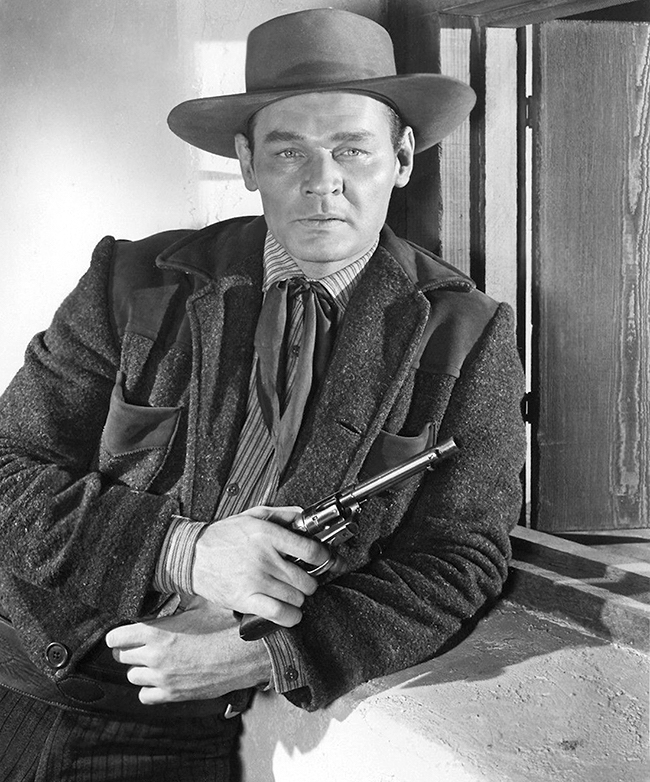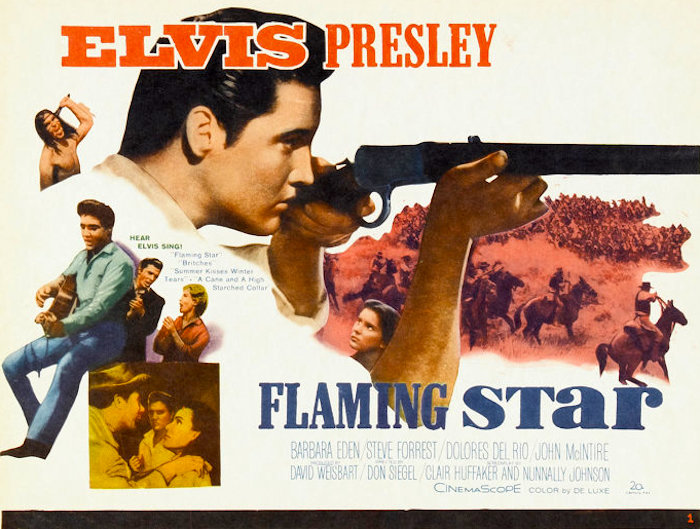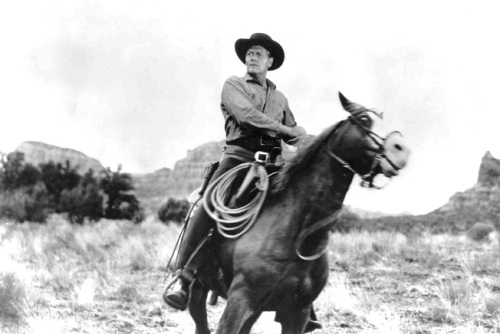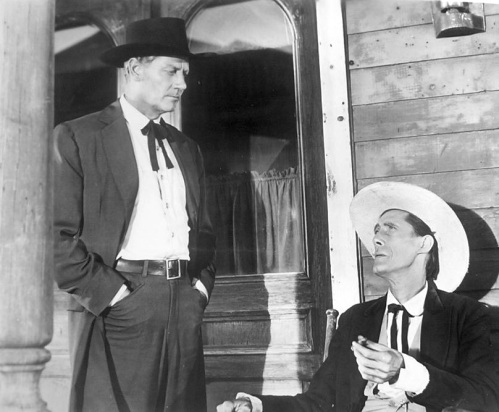
I’ve been meaning to resurrect this series for ages, and I finally got around to it. Our Character Actor Of The Day is Leo Gordon.
Leo Gordon stands tall as one of the screen’s greatest heavies. At six foot two, with a deep voice and icy stare, he’s one of the few guys around who could really come up against someone like John Wayne (Hondo, McLintock!) or Clint Walker (Cheyenne, Night Of The Grizzly) and not look silly.

Don Siegel, who directed Gordon in Riot In Cell Block 11 (1954, above), called Gordon “the scariest man I have ever met.”
Leo Vincent Gordon, Jr. was born December 2, 1922, in Brooklyn, New York. His family lived in poverty and he left school in the eighth grade to work in construction and demolition. Next came the Civilian Conservation Corps. After that, in 1941, Leo enlisted in the Army and served two years.
 After the war, Gordon was arrested for armed robbery in southern California. During the ordeal, he pulled a gun and was shot in the stomach. Leo served five years in San Quentin, where he furthered his education by reading nearly every book in the prison library. (The mugshot was for a fight later, not the robbery arrest.)
After the war, Gordon was arrested for armed robbery in southern California. During the ordeal, he pulled a gun and was shot in the stomach. Leo served five years in San Quentin, where he furthered his education by reading nearly every book in the prison library. (The mugshot was for a fight later, not the robbery arrest.)
Gordon attended the American Academy Of Dramatic Arts on the G.I. Bill — and married one of his classmates, Lynn Cartwright in 1950. They’d work together a number of times (such as Black Patch and some episodes of Adam 12 — often written by Leo) and their marriage would last until his death in 2000.

Gordon was soon cast in the London and Canadian companies of Mister Roberts. After a few years of stage work, Hollywood came calling. Lots and lots of crime pictures and Westerns.

His first Western was City Of Bad Men (1953). Then there’s Gun Fury (1953), Hondo (1954), Ten Wanted Men (1955), Tennessee’s Partner (1955), Yellow Mountain (1954, up top), The Tall Stranger (1957), Quantrill’s Raiders (1958, he’s Quantrill), McLintock! (1963), Night Of The Grizzly (1966), Hostile Guns (1967, below, one of those A.C. Lyles things) and My Name Is Nobody (1973, produced by Sergio Leone). There are lots, lots more.

Gordon turned up in crime pictures like Baby Face Nelson (1957, as John Dillinger), The Big Operator (1959) and The St. Valentine’s Day Massacre (1967). You’ll also find him in Tobruk (1967) and The Haunted Palace (1963). He was versatile and he stayed plenty busy.
On TV, Leo Gordon had recurring role on Maverick (below) as Big Mike McComb, and James Garner would later recruit him for several episodes of The Rockford Files. He’s terrific on The Andy Griffith Show as a guy who’s released from prison — and comes looking for Sheriff Taylor. On Cheyenne, he and Clint Walker are great in some real knock down drag out fights.

All in all, he’d go on to appear in more than 170 movies and TV shows from the early 1950s to the mid-1990s. His last feature was Maverick (1994), and his tiny part is the only reason to sit through that thing.
 Gordon was a screenwriter, too. He wrote for shows such as Bonanza, Gunsmoke, Maverick, Cheyenne and Adam 12 (right). And he penned features like Black Patch (1957), Hot Car Girl (1958), Escort West (1959), The Wasp Woman (1959), Attack Of The Giant Leeches (1959), Bounty Killer (1965) and Tobruk. There were several novels, too, including the historical Western Powderkeg.
Gordon was a screenwriter, too. He wrote for shows such as Bonanza, Gunsmoke, Maverick, Cheyenne and Adam 12 (right). And he penned features like Black Patch (1957), Hot Car Girl (1958), Escort West (1959), The Wasp Woman (1959), Attack Of The Giant Leeches (1959), Bounty Killer (1965) and Tobruk. There were several novels, too, including the historical Western Powderkeg.
Though often the heavy, Leo Gordon had a way of not just making his presence known, but turning in a real performance. (He’s really terrific in The Intruder.) There’s an odd sympathetic angle to a lot of his villains. He was one of the best.
Read Full Post »






























